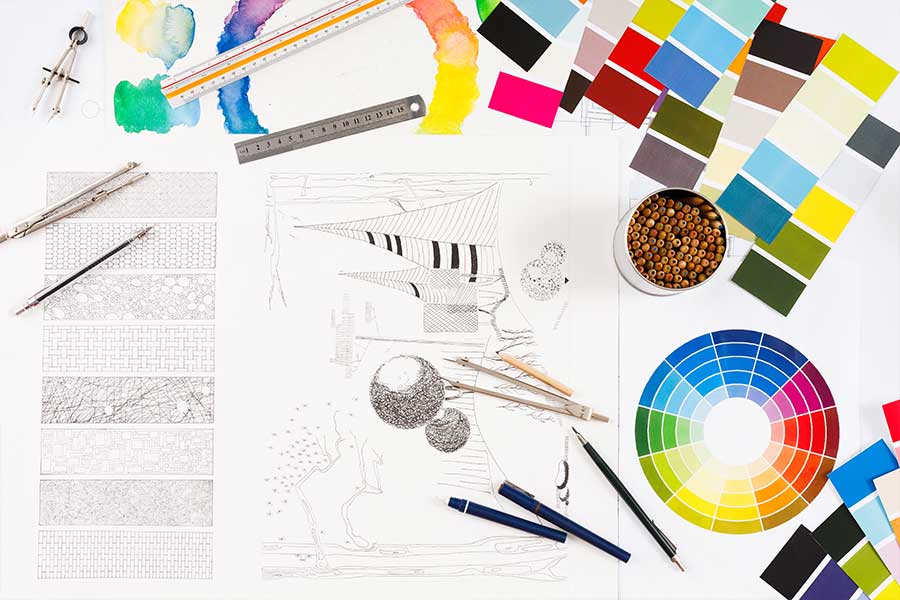How to create a moodboard for free?
Now that we’ve clarified the basics, let’s go through step by step how you can create your own moodboard:
Define Your Ideas
Before you start with the visual design, it’s important to organize your thoughts. Make notes on the following questions:
- What should be shown in your project?
- What mood do you want to convey?
- Are there special elements or themes that should be highlighted?
- What colors, textures, or styles fit your concept?
Remember that your moodboard should build on your basic concept. It is an extension and visualization of your ideas, not a replacement for a well-thought-out concept.
Research Properly
Now comes the creative part: searching for visual elements that represent your ideas. There are numerous sources you can use for this:
- Google Image Search: A good starting point for general inspirations.
- Instagram and Pinterest: Ideal platforms for current trends and creative ideas.
- Stock Photo Portals: Websites like iStock, Shutterstock, or Envato offer a large selection of high-quality images.
- Hot tip: Even if you don’t buy the images, you can use the watermarked versions for your internal moodboard.
- Your Own Photos or Screenshots: If you have specific ideas, you can also use your own shots or screenshots from videos.
Collect all images that appeal to you in one place. For example, create a special folder on your computer to keep everything organized.
Choose the right free moodboard tools
There are a variety of programs and tools you can use to create your moodboard online. Here are some free options we can recommend:
- Pinterest: Perfect for collecting and organizing inspirations. On Pinterest, you can pin various images to your board. This can already be the first step towards a moodboard.
- Canva: Offers many free templates and a user-friendly interface.
- Adobe Express: The basic version is free and allows the creation of AI-generated images and access to an image database.
- Milanote: A versatile tool for creative projects that works well for moodboards.
For the best results, look around carefully and choose the software that seems most intuitive to you and best suited for your project.
Design the moodboard
Now comes the most exciting part: assembling your moodboard, or moodboard design. Here are some tips for achieving a convincing result:
a) Keep it clear: Try not to cram too many elements at once. A clear moodboard is more effective than an overloaded one. Focus on the most important aspects of your idea.
b) In addition to images, integrate other visual elements such as:
- Textures
- Color swatches
- Fonts
- Logos or icons
Variety makes your moodboard more interesting and meaningful.
c) Set focuses:
Not all elements are equally important. Highlight central images or concepts by displaying them larger or placing them in prominent positions.
d) Pay attention to the format:
For digital presentations, a 16:9 format is recommended, as this corresponds to most screens. If you want to print your moodboard, A4 is a common format.
e) Match the style:
The style of your moodboard should match the planned project. A moodboard for a serious corporate film should look different from one for a playful social media video.



